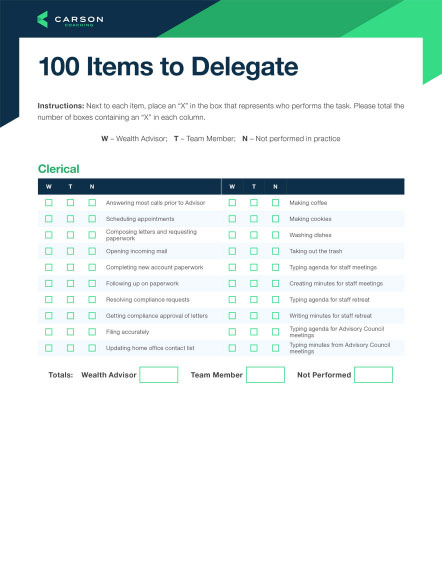Financial planning is an ongoing process that examines your goals, situation and finances in order to determine if and how these goals can be met. It’s not a product-centric process, but often we use financial products like mutual funds, annuities and/or life insurance to achieve goals in the most efficient manner.
But not every product needs to be a permanent fixture in your portfolio. As life changes, your goals evolve with it, and your ongoing need for certain products or strategies could change too. One of the core products for protecting wealth in a household is life insurance. As you age, your need for life insurance could decrease or sometimes increase. If you have a life insurance policy you no longer need, one option might be to gift the policy to a charity if you feel charitably inclined. Life insurance policies can be gifted or used for charitable purposes in several ways. 1. Give Away Your Existing Policy The first is to simply give away an existing policy, a strategy that is open to you if your policy has outlived its primary purpose. Perhaps you no longer need the policy for estate liquidity or estate taxes. You could gift the policy outright to your favorite charity or even use a Donor Advised Fund (DAF). If you give the policy to a charity outright, you can change ownership of the policy and essentially be done with it. You could potentially take a charitable income tax deduction for the value of the policy at the time of the gift – as measured by the sum of the interpolated terminal reserve plus unearned premiums (not the death benefit amount). If the policy requires ongoing premiums, those would be the responsibility of the charity, but there are three ways you can help them out:
- Continue making the policy premium payments on behalf of the charity by directly paying the insurance company if the policy is not yet paid up.
- The better practice would be to pay the value of the premiums to the charity who can then pay the insurance company. These premiums would then be income-tax deductible now that the charity owns the policy.
- During a recent conversation, Dana Holt, JD, AEP®, CEO of HOLT Consulting, also suggests another strategy that could simplify the donor’s life, where “you could convert the policy to a reduced and paid-up policy and donate it with no ongoing premiums needed.” This could be a simpler strategy because you do not need to create an additional outflow of cash after the gift is made to keep the policy in effect for the charity. Instead, you can just transfer the policy value today without ongoing obligations.
“Charities prefer gifts of policies with no ongoing premiums,” Holt also noted. “It eliminates the administrative burden of sending the donor a gift receipt every time a premium payment is made. It also eliminates the question of whether the donor or the charity is to pay future premiums.” When gifting a policy that is worth more than $5,000 at the time of the gift, the donor will need a Qualified Appraisal of the gift. The appraisal must come from a qualified, disinterested third party. Holt noted there are companies out there like Charitable Solutions that will value a policy for you for a fee 2. Give a New Life Insurance Policy Another option is to give a new life insurance policy. This can get tricky because if the charity is going to be the owner, they need to have an insurable interest in the donor. However, if you have a strong ongoing relationship with the charity, this requirement can be met. You can then either pay up the policy completely at the start or make ongoing premium payments over time. If you want to keep more control over the policy or have issues with the insurable interest requirement, another option is to name the charity as a beneficiary of the policy. This can be done in a couple ways:
- You could name a charity as full-benefit or partial beneficiary. For instance, you could leave half of the policy’s death benefit to your spouse or children, and then leave the rest to charity. A charity can be listed as a beneficiary on an existing policy or set up as a beneficiary on a new life insurance policy.
- You could also use a life insurance trust to hold the policy and list the charity as a beneficiary of the trust. This can help in situations when you are splitting death benefits between multiple parties.
Before making any changes to your life insurance policy, it is always important to review your financial plan and see if you still need the policy. In many cases the best thing to do is to keep your current policy intact. In some situations, surrendering the policy or looking at the secondary market would be best. Chris Woehrle, adjunct professor of taxation at the Widger School of Law at Villanova University summarizes it well: “You must be sure you have a frank and open conversation with the charity about your policy before you make changes. Some charities are hesitant to accept life insurance policies while others, especially the well-endowed universities, may welcome it under their gift acceptance policies.” In the end, do the planning up front to make sure your assets fit your goals and needs. That way you won’t end up with a life insurance policy you don’t need, and you can avoid giving one up that you did need.


